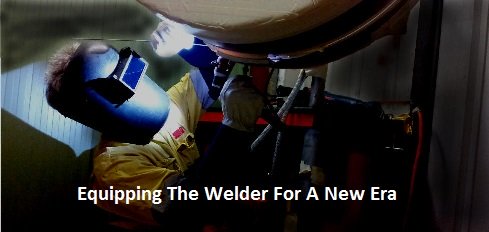| Back to Back Issues Page |
 |
|
The WelderDestiny Compass #024 - The Primary Essential Variable June 14, 2017 |
Wednesday, June 14, 2017 / Perth Australia / By Niekie Jooste You can also read this e-zine on the WelderDestiny website by clicking here... 
The Primary Essential Variable - Issue #024In this edition of "The WelderDestiny Compass":
Let's Talk WeldingA friend who reads this newsletter asked me the other day when I am going to start writing about welding. Seeing as the idea was to first cover some broader topics to set some expectations for the future, and then start looking at more detailed welding topics to prepare ourselves for that future, I think that maybe it is time to start focusing a bit on the welding side of things!I think that the best way to deal with technical welding details within the context of a professional welding career, is to consider the typical essential variables for welding as listed in the welding codes. In essence, if we understand everything about the essential variables, then we will be well on our way to understanding the science of welding. The welding codes just tend to give a list of essential variables, without explaining why they are included. Also, some codes include variables that are not considered in other codes. Why is this? As the welding processes are typically the primary essential variable in the welding codes, we will start by looking at the broad implications of the welding processes themselves. We will then in subsequent newsletters start looking at the other essential variables. If you want me to discuss a particular welding essential variable, please feel free to send me an e-mail with your request. If you would like to add your ideas to this week’s discussion, then please send me an e-mail with your ideas, (Send your e-mails to: compass@welderdestiny.com) or add a contribution directly into the comments form on the bottom of the e-zine page on the WelderDestiny website. Click here to add your contribution directly to the WelderDestiny website... Now let's get stuck into this week’s topics... Welding Process as Primary Essential VariableMost welding codes use the different welding processes as the basis for listing the other essential variables. This makes sense, because many of the variables are only applicable to a specific welding process, and not applicable to others.Codes such as ASME IX includes a different table of essential variables for each different welding process. Some codes, like AWS D1.1, use a single table, but they have separate columns for each of the welding processes, that indicate which of the essential variables are applicable to the specific welding process. Still further codes, like ISO 15614 Part 1, deals with the welding process as though it is just one of the essential variables. This code does however have a section dedicated to essential variables that are specific to particular processes. The way I am going to tackle this issue of welding process as essential variable, is to identify the broad categories within which welding processes fit. By looking at the implications of these broad groupings, we will then be able to see how a process that includes a number of these groupings will act in a broader sense. We will just be looking at the arc welding processes, and particularly focus on those aspects where skill play a role. We will not delve into the machine welding aspects. The Common ProblemsTo start out, we need to appreciate that in arc welding we will be heating the base metal and filler metal to high temperatures (above the melting temperature of the metals involved) using the welding arc. In this process, there are common problems to solve, regardless of the welding process used. The common problems are:
Let us now look at how these problems are solved by different welding processes. Welding Process CategoriesI will now list different welding process categories. Some welding processes will be a combination of these categories, which means that they will have the advantages and disadvantages of the different categories that are applicable to them.
You can now start taking each welding process, and the specific process variant that you want to use, and apply the principles stated above to give you a very good idea of what the features of the process will be, how much skill will be needed and how productive it may be. We can also get a conceptual appreciation of why the welding process is the primary essential variable in the welding codes, and how the other essential variables depend very much on the welding process that we will be using. If you are interested in a more in-depth discussion on this topic, click here to explore it on the WelderDestiny website...
Niekie Jooste P.S. What are your thoughts on how the welding codes deal with the welding process as an essential variable? Which welding process is your favourite, and why? Please share your stories, insights and questions regarding today's topics directly on the e-zine page on the WelderDestiny website. Click here to add your contribution directly to the WelderDestiny website... P.P.S If you know anybody that you believe could benefit from The WelderDestiny Compass, please forward it to them. If this e-zine was forwarded to you, and you are interested in receiving our future editions, please visit the WelderDestiny.com website and enter your e-mail details into the subscription box. It is a big red box on the home page, so you can't really miss it. - I hope! Click here for the best version of The WelderDestiny Compass back-issues... |
| Back to Back Issues Page |